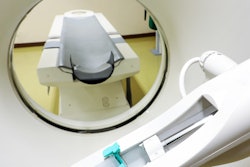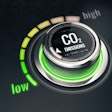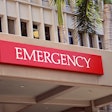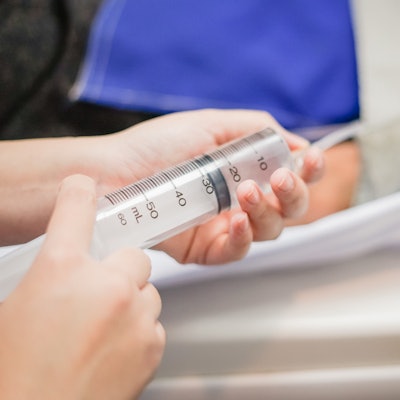
How can radiology best cope with interruptions in the supply of iodinated contrast? Imaging facilities are scrambling to conserve contrast until supplies get back to normal, and a variety of sources are offering advice on how to conserve a material that up to now may have been taken for granted.
A number of hospitals and healthcare systems in the last few weeks have reported shortages of GE Healthcare's Omnipaque contrast medium, an iodinated contrast agent used for CT and x-ray exams. The shortages occurred due to manufacturing interruptions related to COVID-19 at the Shanghai plant where Omnipaque is manufactured. While production at the plant has resumed, it's taking time to get adequate volumes of contrast back into the supply chain.
In the meantime, what can radiology facilities do to cope?
There's no doubt that the contrast shortage is serious, according to Dr. Matthew Davenport of the University of Michigan in Ann Arbor. Davenport is vice chair of the American College of Radiology's (ACR) commission on quality and safety.
"It's serious, it's a big deal, and it's affecting millions of procedures around the world," he told AuntMinnie.com. "GE represents a large market share for CT contrast, a large fraction of GE contrast manufacturing is concentrated in Shanghai, and many health systems use preferred vendor contracting with GE for contrast media. This series of facts has led to severe supply chain disruption due to the recent COVID-19 shutdowns in Shanghai. If a health system primarily uses GE contrast media for intravascular administration, they likely have been seriously affected. Even though this kind of event is low probability, it's high risk if it happens.""
It was actually in April that GE released a letter announcing the contrast shortage.
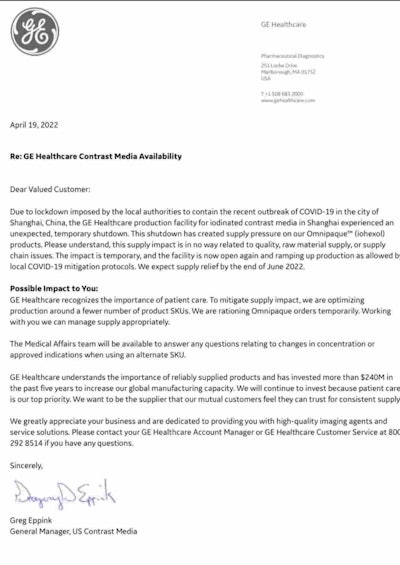 GE's April statement on contrast media shortages.
GE's April statement on contrast media shortages.The company is doing what it can to address the problem, including expanding its production capacity at its Cork, Ireland, plant and working with Shanghai authorities to get plant staff back to work in line with COVID-19 protocols, a spokesperson told AuntMinnie.com, noting that the "scale and speed of the Shanghai lockdown has been unprecedented."
"After having to close our Shanghai manufacturing facility for several weeks due to local COVID policies, we have been able to reopen and are utilizing our other global plants wherever we can," the spokesperson said. "We are working to return to full capacity as soon as local authorities allow."
On May 4, the Greater New York Hospital Association (GNYHA) sounded the alarm about the contrast shortage; since then, the ACR has offered its recommendations for how to handle the situation, which is likely to continue into late June, GE said in its letter.
On May 13, the American Journal of Roentgenology published a clinical perspective that stressed the need for radiology departments to assess contrast inventory, prioritize examination findings, and cut overall iodinated contrast media use through tactics such as direct dose reductions, using alternative imaging modalities or CT contrast agents, or delaying imaging.
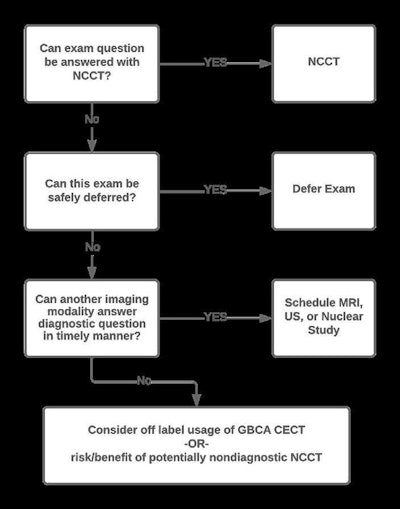 CECT = contrast-enhanced CT. GBCA = gadolinium-based contrast agent. NCCT = noncontrast CT. US = ultrasound. Image courtesy of the American Roentgen Ray Society and the American Journal of Roentgenology.
CECT = contrast-enhanced CT. GBCA = gadolinium-based contrast agent. NCCT = noncontrast CT. US = ultrasound. Image courtesy of the American Roentgen Ray Society and the American Journal of Roentgenology."Ideally, rescheduling should be limited to certain low-risk examinations (i.e., annual staging examinations in patients without clinical evidence of recurrence), as well as follow-up examinations of incidental findings not posing an immediate threat to the patient," wrote co-authors Dr. Joseph Cavallo and Dr. Jay Pahade, both from Yale School of Medicine in New Haven, CT.
A key lesson from this situation is that hospitals and their radiology departments must consider how to diversify CT contrast supply -- and assess the overall use of contrast, Davenport noted.
"It's probably too risky to rely on a single city to supply a huge part of your healthcare supply need," he said. "And it's a good idea to consider if the contrast we use is always necessary. Dose can often be lowered by using weight-based dosing, kV modification, and dual-energy CT."
In any case, in crises like this, the radiology community comes together to problem-solve, according to Davenport.
"It's important not to be alarmist," he said. "There are thoughtful people out there making decisions about how to manage this problem -- smart people who are putting patients first," he said. "We don't want to just randomly cancel exams but to ration care in a safe way."







